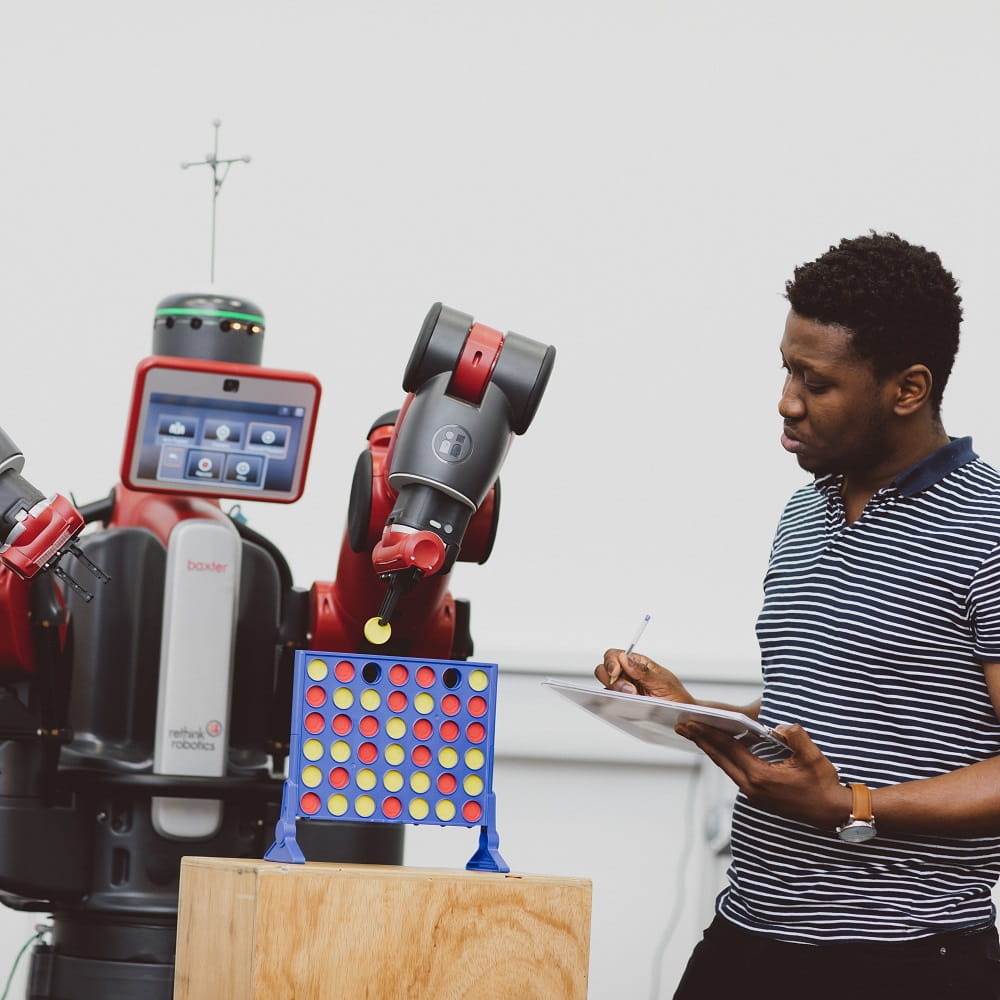Robotics and Embedded Systems are used extensively in modern technologies, including automotive, image processing, 3D printing, and healthcare devices, as well as real-time critical systems and search and rescue operations.
The group’s mission is to solve fundamental problems in robotics and embedded systems particularly in the "perception-action, continuous learning, decision making, social intelligence" loop, localisation as well as embedded systems and System-on-Chip design and processor architectures targeted for cyber physical systems, automotive/industrial systems, computer vision, data analytics, Internet of Things and real-time critical systems.
The research outputs benefit and impact a range of end users and stakeholders in Agricultural robotics, Assistive robotics for Social Care, Manufacturing, Electronic Products, Automotive and Nuclear Robotics.
The group encompasses three associated special interest groups:
Robotics and Mechatronics
The Robotics and Mechatronics Lab researches the development of various kinds of mechatronic systems and intelligent robots that will be used in environments coexisting with humans. These mechatronic systems and robots are mobile, autonomous, interactive and intelligent, and will be useful assistants/companions for people in different ages, situations, activities and environments, helping to improve their quality of life.
The Essex Robotics and Mechatronics Lab is one of the largest robotics and mechatronics groups in the UK, with advanced mobile robotics research facilities. Our Robot Arena is one hundred square metres in area and has a six metre high ceiling to accommodate flying robots. It has one of the world's largest powered lab floors for long-duration experiments with mobile robots.
We have invested over £2 million in equipping this state-of-the-art facility with robotics and mechatronic systems which include: collaborative table-top robot UR3, industrial robot Baxter, humanoid robot Pepper and NAO, wheeled mobile robots, flying robots, robotic fish, intelligent wheelchairs, and so on.
Embedded and Intelligent Systems
The Embedded and Intelligent Systems Laboratory (EIS@Essex) carries out research in the areas of Embedded Systems and System-on-Chip design with focus on security, power, performance and reliability, advanced embedded systems and processor architectures targeted for cyber physical systems, automotive/industrial, robotics, image processing, networked and distributed sensor nodes/Internet of Things and real-time critical systems.
Furthermore, it works in the area of Big Data Analytics, computer vision and embedded AI for real world problems and application areas. Our projects have included Human Rights, Big Data and Technology with the Essex Human Rights Centre, the National Centre for Nuclear Robotics led by the University of Birmingham, and AppControl: Enforcing Application Behaviour through Type-Based Constraints led by the University of Glasgow.
The EIS laboratory has state-of-the-art design and prototyping facilities for embedded systems design and system-processing architectures. Funded through a £140k RCIF investment by the University, it houses, amongst other equipment, several very-high-gate-count top-end FPGA boards, many processor architectures, advanced development kits and IOS/Android devices, sensor and actuators to design real-world prototypes.
Research areas include advanced embedded systems and processor architectures for Cyber Physical Systems (CPS), automotive/industrial, robotics, image processing, sensor network nodes, Internet of Things (IoT) and other real-time critical applications, as well as games hardware and software systems, Low-Power Architectures, Big Data Analytics, computer vision and embedded AI for real world problems and robot control.
We are actively involved in a range of research projects. Our work has been funded by public bodies and we work with a number of institutions worldwide. Our research has also led to the formation of two start-up businesses: UltraSoC Technologies (which was purchased by Siemens in 2020), and Metrarc.
Cyber Initiative
Cyber Initiative focuses on research and education dedicated to addressing the deep integrations and close interactions among cyber systems, physical systems, and social systems, which could involve information systems, energy systems, human activities, environmental factors, etc.
Cyber Initiative brings together researchers from different fields to tackle the technical challenges in developing secure cyber-physical-social systems. Our current research topics include:
- Cyber-Physical Systems
- Cyber-Social Systems
- Cybersecurity
- Cyber-Physical Modelling, Analysis and Verification
- Industrial Cyber-Physical System.















